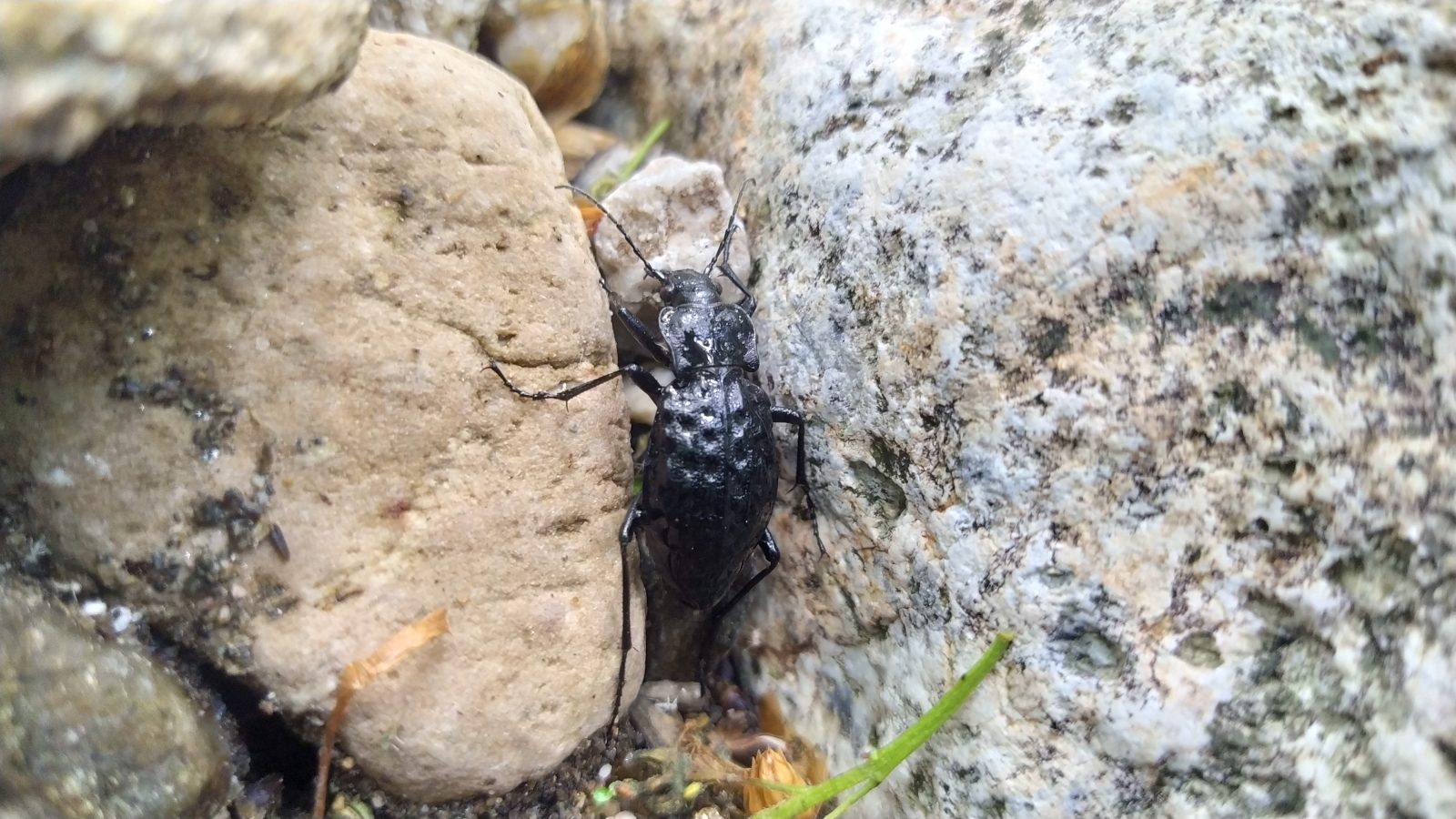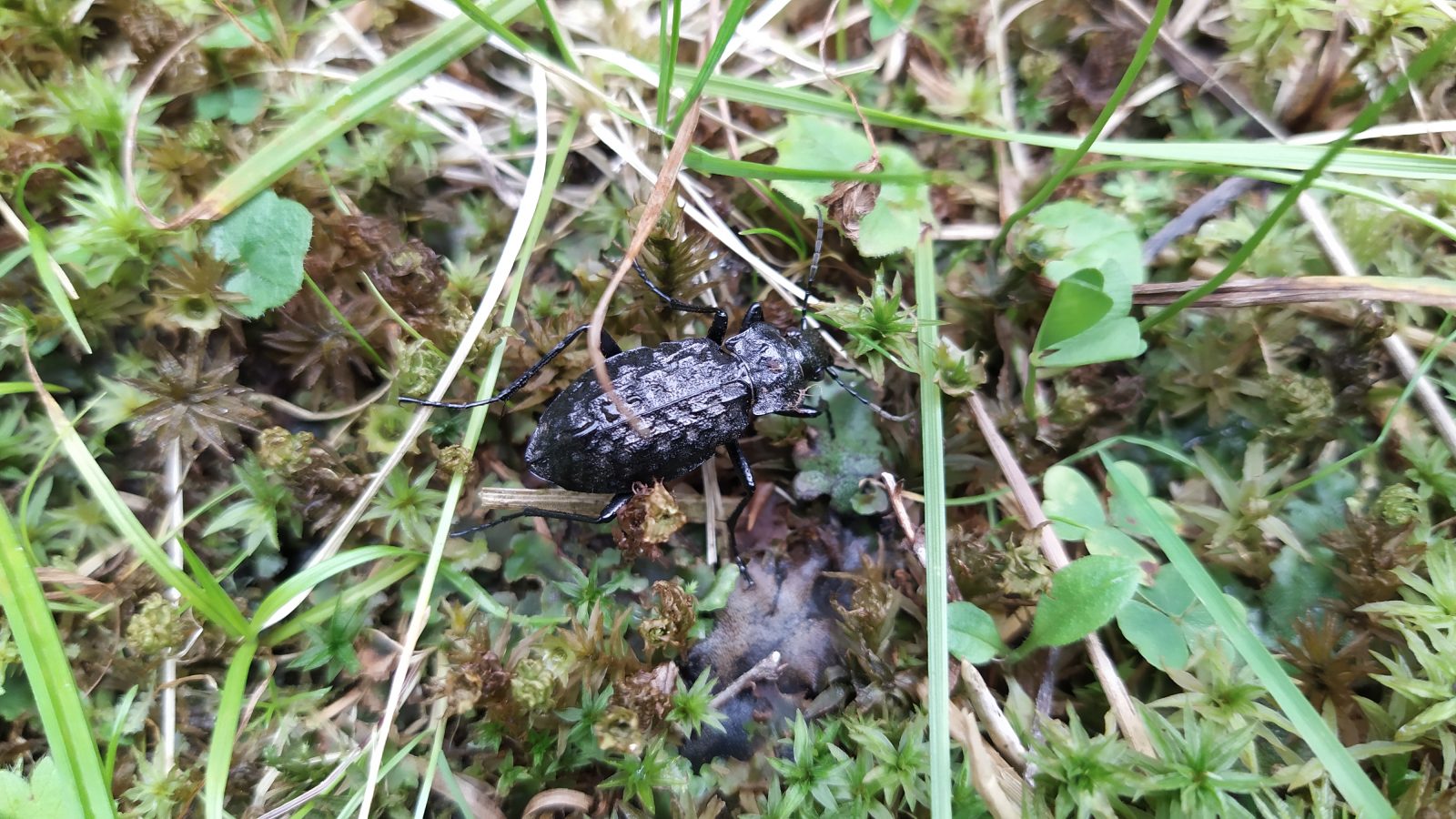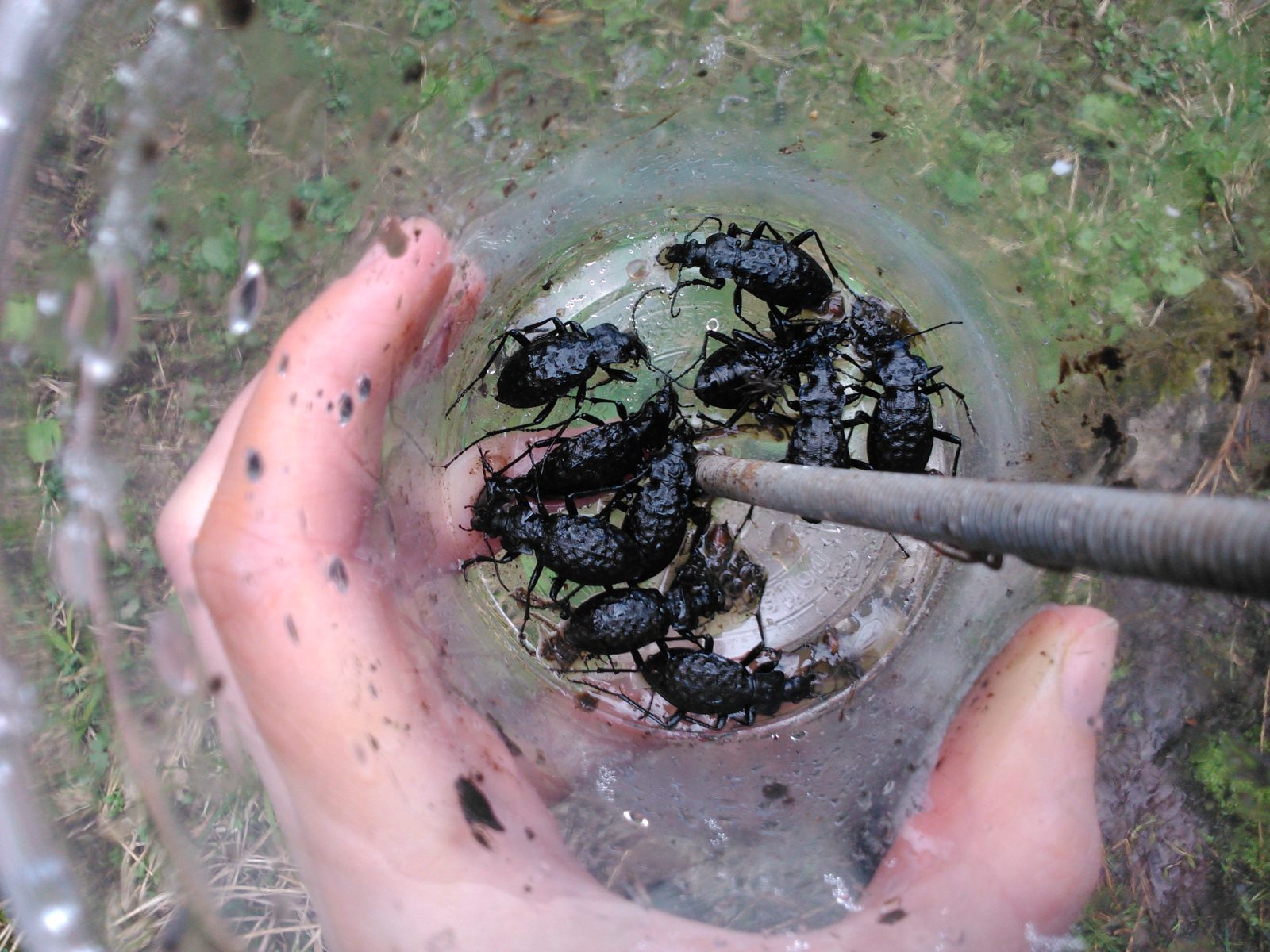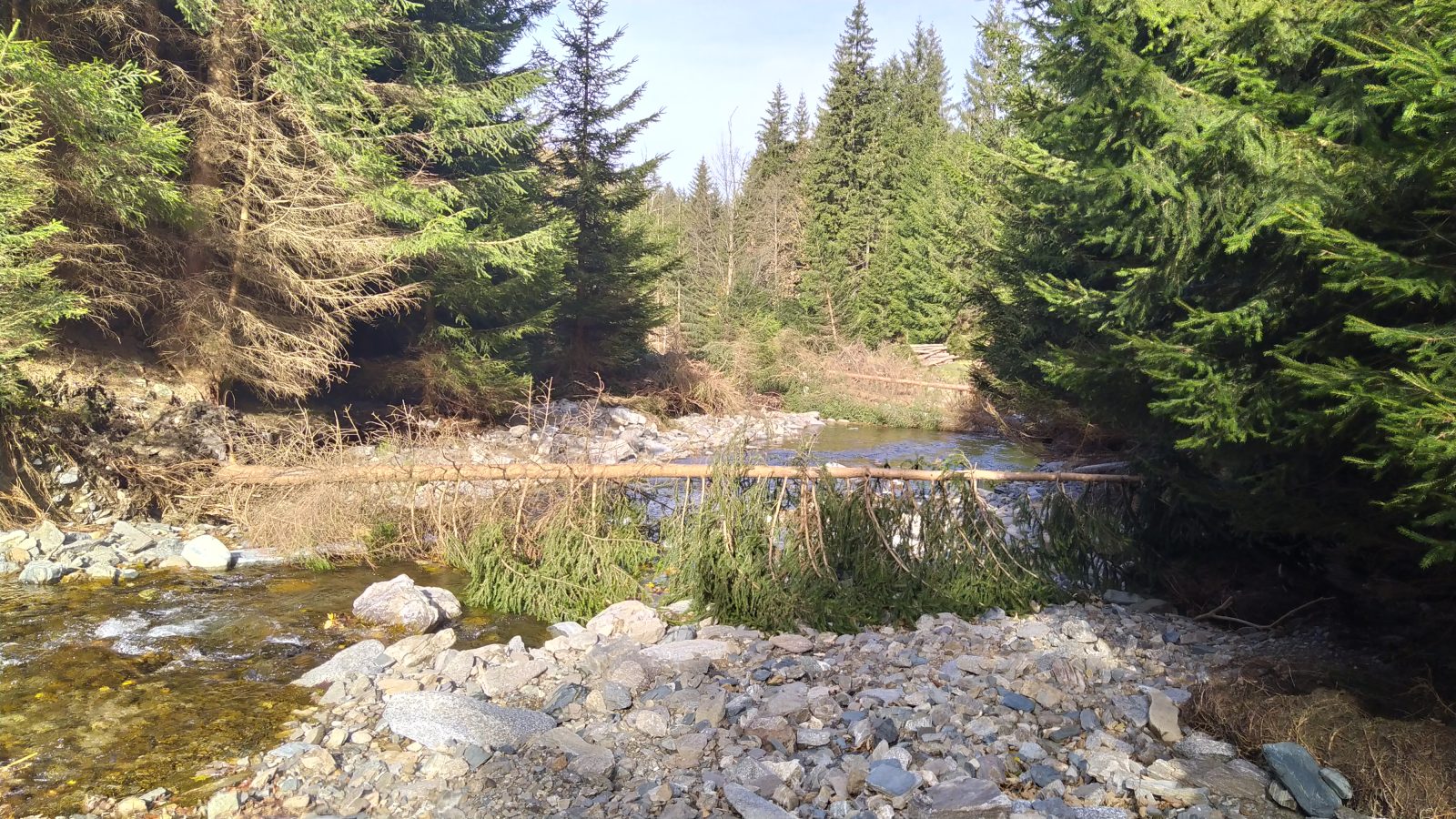
Is snow cover a key factor for a Carabus beetle?
At first glance, a thick blanket of snow may seem uninviting for a beetle. Carabus variolosus is different. This beetle is the variegated ground beetle, which thrives in areas where snow lingers. Snow cover is a crucial factor influencing the population size of this species.
For several years, researchers at the Department of Invertebrate Biology, Evolution and Conservation at the University of Wrocław have been studying Carabus variolosus Fabricius, 1787. This moisture-loving beetle from the Carabidae family is often seen at stream banks and bodies of water, but can also inhabit damp forests and meadows, puddles, ditches and ruts in roads filled with water. It is sometimes referred to as semi-aquatic, as it can scavenge directly under water and stay submerged for about half an hour, surfacing only briefly to breathe through thoracic spiracles.
Sensitive to climate change
The decline in the population of this species was observed at the beginning of the 20th century. It is nowadays considered endangered almost everywhere. It survived only in a few local refuges. It is listed in Załącznik II Dyrektywy Siedliskowej (Annex II of the Habitats Directive) and is under protection in Poland. Its unique habitat requirements connected to the need for constant presence of water make it sensitive to climate change.
The researchers from the Department of Invertebrate Biology, Evolution and Conservation decided to investigate if climatic factors, such as air temperature, precipitation, and snow cover, would influence this species’ population. They found out that the climate changes, rather than weather changes, visibly affect the beetle population. Winter is significant, especially the number of days with snow cover. The presence of this species is closely related to soil moisture, which is influenced by snow melting. In the recent couple of years, the period of snow cover in the mountains has been shorter as a consequence of earlier snow melting. It influenced the water levels in spring streams and lowered soil moisture when the beetles are most active. May and June are especially significant, since most beetles emerge for the first time during this period.

Larvae need to survive summer droughts
The beetles leave their winter shelters right after the snow has melted. They scavenge and feed intensively for a short period, and then begin to reproduce. They are very active in this phase; therefore, they are easily captured in soil traps. Over 90% of individuals are caught for the first time in May and June, which further proves the importance of this period. During this time, females lay eggs in moist soil crevices, often near water. The beetle’s unfolding happens over a few months during summer – from egg to larva to pupa to adult beetles. This fact and the increasingly intense summer droughts pose a challenge for this species. The development of larvae is crucial since their numbers will determine how many beetles will appear at the end of summer. Larvae, like adult beetles, are moisture-loving but more prone to desiccation. They are active in summer, so they must deal with low soil moisture, high temperatures, and a decreasing amount of rainfall. The surviving adult beetles face another challenge by late summer, namely finding a suitable overwintering site to survive the winter. Beetles choose rotting stumps or bury themselves in the soil, where snow cover again plays a vital role. When it is thin, it offers little insulation, which increases the risk of the beetles freezing to death. Even if the winter is warm, a rainy instead of a snowy winter will fail to provide adequate soil moisture in spring. The snow cover can’t be replaced by rainfall since the melting snow provides more water than rain.

The results of research published in Science of the Total Environment show that the active spring population of the species is mostly affected by the previous winter and summer conditions. The autumn population, which includes young, unable to reproduce individuals that appear from late summer until autumn, is influenced by the conditions during summer of that same year. Interestingly, weather conditions, such as short rain or snowfall, seem to have a minor impact on the population of the species during the season. The previous winter and summer have a major influence, and we can only observe their consequences.

Will the beetles remain in the habitats destroyed by the flood?
For two years, our researchers have continued the research of this species in the Biała Lądecka Valley – an area flooded in September of last year. The species’ study sites were heavily transformed or completely destroyed. We cannot be certain about how the beetles will react to it. Some of them were already in hibernation, while others were still active. Both groups may have been washed down the river with the flood wave. It is hard to say whether the individuals that hibernated in the soil survived. It is possible that they are still there and will emerge from beneath the rubble of stones. The questions remain – will the completely changed habitat still meet their needs? Will they remain there, or will they search for new breeding grounds? The Department of Invertebrate Biology, Evolution, and Conservation’s scientists will try to find answers in the upcoming season.
Text: dr Katarzyna Tyszecka, prof. dr hab. inż. Marcin Kadej.
Translated by Julia Prażuch (student of English Studies at the University of Wrocław) as part of the translation practice.
Added by: E.K.
Date of publication: 28.04.2025



